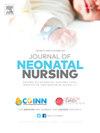Differences in infant safe sleep practice between the neonatal unit and the home environment: A systematised review
Q2 Nursing
引用次数: 0
Abstract
Background
Infant positioning in the neonatal unit differs from guidelines for home infant safe sleep practice. This qualitative systematised review aims to identify reasons behind the difference and the implications.
Methods
Five databases were searched (CINAHL complete, Pubmed, Embase, NICE Evidence Search, and Directory of Open Access Journals) for primary research published from 2011 to February 2022. Quality was assessed using the Critical Appraisal Skills Programme or Joanna Briggs Institute checklists. Thematic analysis with inductive coding was used to develop a narrative synthesis.
Findings
Searches returned sixty-two studies; seven were included. Four themes were identified: prone position, self-regulation, all positions (prone, supine, right and left lateral), and nesting.
Conclusion
Sleep positioning in the neonatal unit differs from infant safe sleep guidance to optimise holistic development for vulnerable infants. Once infants are medically stable, neonatal nurses should support parents with establishing a safe sleep environment compliant with infant safe sleep guidance.
新生儿单元和家庭环境之间婴儿安全睡眠实践的差异:系统回顾
背景:新生儿病房的婴儿体位不同于家庭婴儿安全睡眠实践指南。这篇定性的系统性综述旨在找出差异背后的原因和影响。方法对2011年至2022年2月发表的5个数据库(CINAHL complete、Pubmed、Embase、NICE Evidence Search和Open Access Journals)进行检索。质量评估使用关键评估技能计划或乔安娜布里格斯研究所的清单。运用归纳编码的主题分析来发展叙事综合。搜索得到62项研究;其中包括7人。确定了四个主题:俯卧位,自我调节,所有位置(俯卧,仰卧,左右侧卧)和筑巢。结论新生儿单元的睡眠定位不同于婴儿安全睡眠指导,可优化易感儿的整体发育。一旦婴儿在医学上稳定,新生儿护士应支持父母建立符合婴儿安全睡眠指导的安全睡眠环境。
本文章由计算机程序翻译,如有差异,请以英文原文为准。
求助全文
约1分钟内获得全文
求助全文
来源期刊

Journal of Neonatal Nursing
Nursing-Pediatrics
CiteScore
2.00
自引率
0.00%
发文量
143
期刊介绍:
Aims & Scope: This is the practical, bimonthly, research-based journal for all professionals concerned with the care of neonates and their families, both in hospital and the community. It aims to support the development of the essential practice, management, education and health promotion skills required by these professionals. The JNN will provide a forum for the exchange of ideas and information between the range of professionals working in this field; promote cooperation between these professionals; facilitate partnership care with families; provide information and informed opinion; promote innovation and change in the care of neonates and their families; and provide an education resource for this important rapidly developing field.
 求助内容:
求助内容: 应助结果提醒方式:
应助结果提醒方式:


